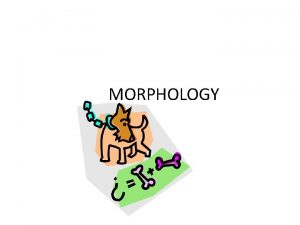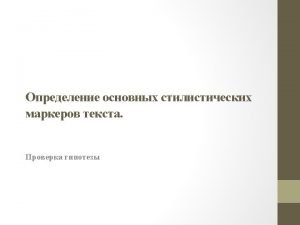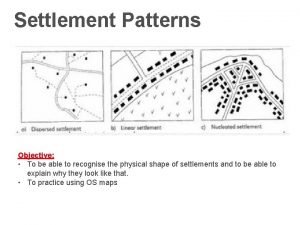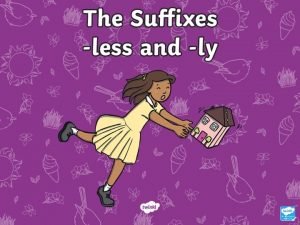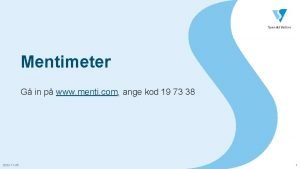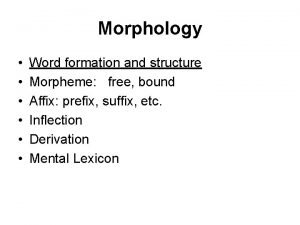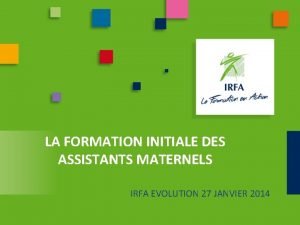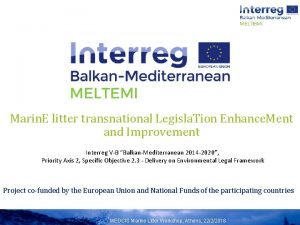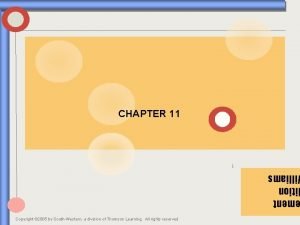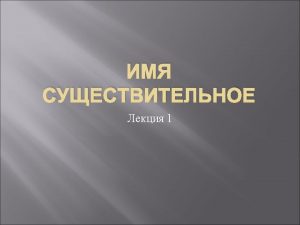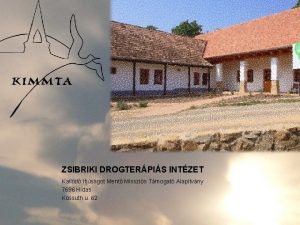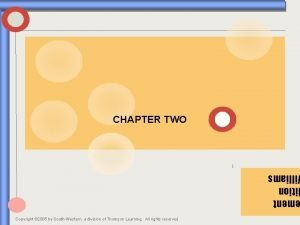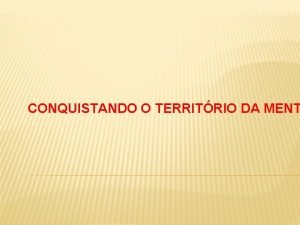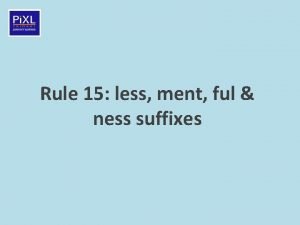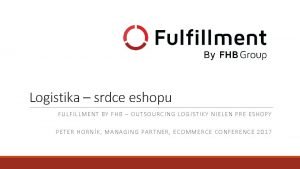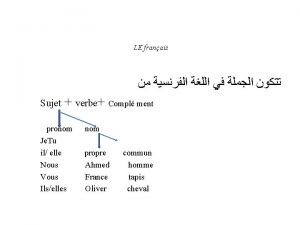iyal S n Irfa ment of M r



































- Slides: 35

iyal, S n. Irfa ment of M. r ng art By: E rer, Dep ing s u Lect e Proces il Textile Fibe rs (Raw Mater ials)

Raw Materials 0 Textile fibers may be divided into natural and manmade. 0 Due to increase in world population and industrial revolution, the consumption of fibers has continuously increased. 0 Consumption of textile goods person has also risen. 0 Citizens of industrial countries consume about 20 to 25 kg 0 f textiles per year. By: Engr. M. Irfan Siyal, Lecturer, Department of Textile Processing

Textile Fibers By: Engr. M. Irfan Siyal, Lecturer, Department of Textile Processing

Types and Classification of Natural fibers By: Engr. M. Irfan Siyal, Lecturer, Department of Textile Processing

Cotton 0 Cotton referred to as the “King of fibers” is most important textile fiber in the world. 0 Cotton fabrics were made by the ancient Egyptian, Chinese and of course Indian civilizations. 0 The cotton fiber is a long cell made up of countless cellulose molecules. 0 Cotton is removed mechanically from the seed balls by the cotton gin. 0 The ginned cotton is then pressed into bales and sent to the factories to be spun into yarns. By: Engr. M. Irfan Siyal, Lecturer, Department of Textile Processing

Microscopic Appearance 0 Cotton fiber is a single cell and varies in length from ½ to 2½ inches. 0 The width varies between 12 to 20 microns. 0 Cross section is like kidney or bean shaped. 0 Longitudinal view is like twisted flat ribbon. By: Engr. M. Irfan Siyal, Lecturer, Department of Textile Processing

Properties Physical properties: 0 color (i. e) white to cream. 0 low luster, elasticity & resilience. 0 25% stronger when wet than dry. 0 Cotton fabrics shrinks 0 burns quickly and readily with a smell of burning paper. 0 good conductor of heat. Chemical Properties: 0 Resistant to alkali. 0 Sensitive to Strong acids. 0 Resistant to organic solvents. 0 Contains OH as a functional group. 0 Its repeat unit is cellobios. By: Engr. M. Irfan Siyal, Lecturer, Department of Textile Processing

Uses 0 Cotton is the most widely used fiber because it is 0 inexpensive, easy-care, high absorbency, excellent launder ability and good colorfastness. 0 It is not only used for apparel but also for household and industrial applications. 0 Also used for furnishing textiles. 0 Shirts, blouses, undergarments, outerwear, tapestry, Socks, and nonwovens. By: Engr. M. Irfan Siyal, Lecturer, Department of Textile Processing

Silk 0 one of the most elegant and luxurious of fibers. 0 popularly known as the Queen of fabrics. 0 The method of raising silk worms and removing the silk filaments from the cocoons, and of using the silk in weaving for garments was discovered by Hsi-Ling-Chi, a little Empress of China. 0 Commercial silk is produced by the cultivated silkworm, Bombyx mori, a caterpillar, that feeds on mulberry leaves. By: Engr. M. Irfan Siyal, Lecturer, Department of Textile Processing

Microscopic Appearance 0 Longitudinally, degummed silk appears as a smooth, lustrous, translucent filament like a glass rod. 0 In cross-section silk show triangular in shape. By: Engr. M. Irfan Siyal, Lecturer, Department of Textile Processing

Properties Chemical Physical 0 very fine and long. 0 one of the strongest fibers. 0 damaged by strong acids and alkalis. 0 not affected by cleaning solvents. 0 has good elasticity By: Engr. M. Irfan Siyal, Lecturer, Department of Textile Processing

Use 0 Silk fabrics are noted for their 0 soft, luxurious handle, rich luster, warmth, resilience, and crease resistance, strength and excellent draping quality. 0 A wide range of fabrics are made ranging from suiting material, to heavy and rich pile velvet. 0 Silk serves best for ceremonial occasions, evening or day wear and lingerie. 0 Also used in shirts, scarves, drapery (Draperies), ties, upholstery (Covers and Cushions) fabrics, and carpets. By: Engr. M. Irfan Siyal, Lecturer, Department of Textile Processing

Wool 0 a natural protein animal hair fiber. 0 Sheepskin, including the hair, was probably used long before it was discovered that fibers could be spun into yarns or even felted into fabric. 0 Sheared wool is called fleece or clipwool and wool taken from the slaughtered animal is called pulled wool which is inferior in quality to fleece or clip wool. 0 The finest wool is from young sheep. 0 Very fine wool of excellent quality is shorn from lambs when eight months old. By: Engr. M. Irfan Siyal, Lecturer, Department of Textile Processing

Microscopic Appearance 0 In longitudinal view its surface is covered with scales. 0 The crosssection reveals the cellular internal structure. By: Engr. M. Irfan Siyal, Lecturer, Department of Textile Processing

Properties Chemical Physical 0 varies in length from 1½ -15 inches 0 after scouring is yellowish - white or ivory in colour. 0 Other wool may be grey, black, tan or brown. 0 is susceptible to damage by alkaline solution. 0 Even 5% of Na. OH will dissolve wool. 0 has a natural crimp. 0 Is resistant to mild acid but strong concentrated sulphuric acid decomposes wool fibers. 0 The crimp increases the elasticity and elongation properties of the fiber. 0 Solvents have no damaging effect on wool fibers. 0 Fine & medium wool have more luster than coarse wool. By: Engr. M. Irfan Siyal, Lecturer, Department of Textile Processing

Uses and some more properties 0 They are crease resistant, flexible, elastic, absorbent, warm and comfortable. 0 A major problem with wool fabric is the tendency to shrink. 0 Crimp decreases when wet and increases when dry. 0 Wool can be dry-cleaned but laundering is difficult. 0 Specially used in Blankets, Sweaters, Socks, Quilts, outerwear, upholstery, etc. By: Engr. M. Irfan Siyal, Lecturer, Department of Textile Processing

Mineral Fibers 0 The most important is asbestos which has been used for last 2500 years. 0 These fibers are extracted from rocks. 0 These fibers are extremely fine, the diameter varies from 0. 2 to 2 micrometer. 0 They are stable at high temperature and are cheap. By: Engr. M. Irfan Siyal, Lecturer, Department of Textile Processing

Uses 0 They are made in all form of textiles and 0 used as reinforcement into concrete and 0 also suitable for insulation. By: Engr. M. Irfan Siyal, Lecturer, Department of Textile Processing

Limitations and uses of asbestos 0 Fine asbestos is carcinogenic (Cancer Causing). 0 That’s why the research is going on to replace this fiber with MMF. 0 However its uses are in variety, like 0 0 0 fire protection, heat and electrical insulation, as seals in filtration, in friction linings, like in disk breaks, and technical products for construction. By: Engr. M. Irfan Siyal, Lecturer, Department of Textile Processing

Chemical or Manmade Fibers 0 Since 1950, a major increase in the share of chemical fibers can be observed. 0 In 1985, the world share of natural and chemical fibers was equal. 0 Since then chemical fibers have become more and more dominant. By: Engr. M. Irfan Siyal, Lecturer, Department of Textile Processing

Classification of Chemical fibers By: Engr. M. Irfan Siyal, Lecturer, Department of Textile Processing

Viscose (Rayon) 0 Manufacture 0 There are three main steps in making rayons. They are, 0 1. To obtain pure cellulose from the raw material. 0 2. To form a thick, thread - like liquid from the cellulose. 0 3. To spin the liquid into hardened filaments of regenerated cellulose. By: Engr. M. Irfan Siyal, Lecturer, Department of Textile Processing

Conti. . 0 For viscose, wood pulp or cotton linters, which yield the cellulose, are used as raw materials. 0 They are treated with caustic soda and carbon bisulphide to form a thick liquid. By: Engr. M. Irfan Siyal, Lecturer, Department of Textile Processing

Properties Chemical Physical 0 Its is absorbent, 0 Rayon fibers disintegrate in acids. 0 is not elastic, 0 it has low strength, dry 0 when wet and greater stretch, strength is much reduced. 0 Strong alkali solution causes rayon to swell and produce a loss of strength. By: Engr. M. Irfan Siyal, Lecturer, Department of Textile Processing

Uses 0 0 0 blouses, dresses, jackets, hats, slacks, sportswear, ties, bedspreads, Draperies, tablecloths, upholstery, baby and feminine hygiene products. By: Engr. M. Irfan Siyal, Lecturer, Department of Textile Processing

Polyester 0 It’s a synthetic fiber which is produced by the reaction of Ethylene Glycol and Tere-phathalic acid. 0 The fiber strength varies due to differences in the formulation of the polymer. By: Engr. M. Irfan Siyal, Lecturer, Department of Textile Processing

Properties Physical Chemical 0 It is transparent and white or off - white in color. 0 It has good resistance to weak than strong alkalis. 0 There is no loss of strength when the fiber is wet. 0 It is not affected by acids, but prolonged exposure to strong acids at high temperature may destroy the fiber. 0 It is hydrophobic in nature. 0 It has good elasticity, resilience and wrinkle resistance. 0 It is resistant to organic solvents. By: Engr. M. Irfan Siyal, Lecturer, Department of Textile Processing

Uses 0 Polyester fibers have immediate consumer acceptance because of their easy-care and wrinkle-free properties. 0 They require no-ironing, easy to launder and quick to dry. 0 Polyesters are not only used as apparel but also in industrial use items such as 0 0 0 0 laundry bags, calendar sheeting, press covers, conveyor belts, fire hoses, fish netting, Ropes etc. By: Engr. M. Irfan Siyal, Lecturer, Department of Textile Processing

Glass fibers 0 Glass is in inorganic nonmetallic material. 0 Generally the glass state is defined as the frozen state of a super-cooled and thus solidified liquid. 0 Silicate glass is composed of a network of the two components Si. O 2 and Silicate. By: Engr. M. Irfan Siyal, Lecturer, Department of Textile Processing

Properties Chemical Physical 0 It is inflammable. 0 It is transparent or translucent. 0 It is resistant to oils, fats and solvents. 0 It is also highly resistant to acids and alkalis. By: Engr. M. Irfan Siyal, Lecturer, Department of Textile Processing

Uses 0 Used for reinforcement for plastics and for building materials. 0 Used also as an insulating material. By: Engr. M. Irfan Siyal, Lecturer, Department of Textile Processing

Natural Fibers versus MMF consumption By: Engr. M. Irfan Siyal, Lecturer, Department of Textile Processing

Natural Fibers versus MMF consumption 0 The graph is showing that in early period specially in 20 th century , the use of natural fibers were more than manmade fibers. 0 While it is also showing that in 21 st century, the much and more manmade fibers are used as compared to natural fibers. By: Engr. M. Irfan Siyal, Lecturer, Department of Textile Processing

Natural Fibers Versus MMF By: Engr. M. Irfan Siyal, Lecturer, Department of Textile Processing

References 0 Textile Technology, By: Burkhard Wolf horst. 0 http: //www. jcfa. gr. jp/english/tcij/2_world_productio n/2 -1_production-t. html 0 http: //oecotextiles. wordpress. com/tag/globalorganic-textile-standard/ 0 http: //chempolymerproject. wikispaces. com/Rayon++E+-+CWRB By: Engr. M. Irfan Siyal, Lecturer, Department of Textile Processing
